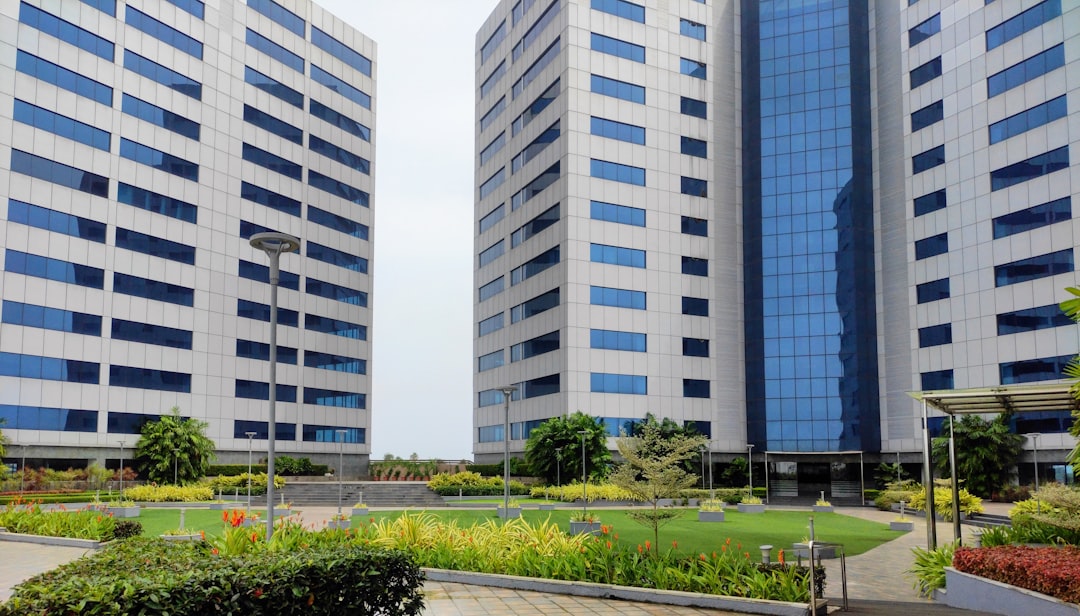

Engage prospects with a scan and streamline customer engagement with FREE QR code marketing tools by Sona – no strings attached!
Create a Free QR CodeFree consultation

No commitment

Engage prospects with a scan and streamline customer engagement with FREE QR code marketing tools by Sona – no strings attached!
Create a Free QR CodeFree consultation

No commitment
In today’s digitally driven world, QR codes have evolved from a novelty to a strategic powerhouse in bridging offline engagement with online action. For relocation service companies, QR codes represent a frictionless and effective way to boost lead generation, streamline client onboarding, and drive conversions without requiring app downloads or complicated workflows.
Relocation service companies are navigating a rapidly shifting landscape, shaped by changing consumer behaviors, increased competition, and rising demand for convenience. The typical offline journey is riddled with friction. Prospects see a truck in traffic, receive a mailer, or pick up a brochure at an expo, then forget to follow through later. QR codes eliminate that gap by turning every physical moment into a direct path to an online action such as a quote request or booking.
By integrating QR codes into everyday touchpoints such as brochures, trucks, business cards, direct mail, and on-site signage, relocation businesses can avoid the costly mistake of letting intent-rich, anonymous traffic go unnoticed. The right QR strategy lets you capture more leads, shorten sales cycles, and attribute revenue back to the physical assets driving demand. The result is measurable, high-value interactions at every stage of the customer journey that convert lost opportunities into revenue.

For relocation service companies, losing track of high-value prospects because they never make it into a CRM is a recurring pain point that translates to revenue leakage. QR codes bridge the gap between physical touchpoints and digital outcomes, making it easier to drive qualified leads and conversions. When a curious homeowner can scan a code on a truck to get an instant estimate or an HR manager at a seminar can book a site survey in seconds, conversion becomes the path of least resistance.
The biggest wins come from replacing analog processes with QR-powered digital experiences. Paper brochures that require a later phone call can link to a dynamic quote calculator. Printed rate sheets can redirect to up-to-date pricing. Paperwork that once required manual data entry can become mobile-friendly forms. The goal is to capture demand while attention is highest, then measure where it came from so you can invest more in what works.
A relocation company that replaces static price lists with QR-enabled digital estimates eliminates friction for prospects and captures data that would otherwise be lost. With platforms like Sona QR handling deployment, tracking, and CRM integration, teams get real-time visibility into campaign performance and can take action fast, leading to more conversions and better ROI.

Many relocation companies struggle with a lack of visibility into who engages with their marketing in the offline world. People see a truck, collect a brochure at a home show, or receive a postcard, but without a seamless way to respond, interest fades. QR codes link offline assets to online experiences so prospects can act in the moment. This reduces lag time and reduces the risk that competitors will intercept the lead.
The relevance extends beyond convenience. Dynamic QR codes allow companies to update destinations without reprinting, while tracking provides the insights needed to judge whether out-of-home assets such as vehicles or yard signs are actually producing pipeline. With accurate attribution, leaders can double down on what works and retire what does not.
By applying QR codes to materials common in relocation such as estimate sheets, invoices, vehicle graphics, yard signs, expo banners, and direct mail, companies can transform every print impression into a measurable moment of engagement.

Relocation companies handle multiple customer journeys at once, from residential move inquiries to corporate relocation bids. The right QR format and destination can reduce friction and increase accuracy in each scenario. Most teams see the biggest impact from web link and form-based codes that drive quotes and bookings, plus vCards that put a coordinator’s details into a phone in seconds.
If you manage many placements, dynamic QR codes are ideal. You can change the destination to match seasonal campaigns or staffing changes without reprinting. For always-on assets such as a truck wrap or office signage, dynamic codes also unlock tracking and testing to improve performance over time.
With Sona QR, you can generate and manage all formats in one place. Opt for dynamic QR codes for campaigns that need tracking, retargeting, or future flexibility. Use static QR codes for stable destinations such as a brochure PDF that rarely changes.

Relocation companies already invest in physical marketing through vehicles, signage, packaging, and mailers. What is often missing is a direct and measurable next step. Smart QR deployment turns these offline exposures into lead capture moments that contribute to pipeline and revenue.
Success comes from matching QR placements to intent and context. For example, commuters behind your truck have time to scan, whereas a passerby might need a short vanity URL. At events, large-format signage should feature codes at eye level with clear CTAs. On paperwork, codes can guide customers to reviews or support forms at precisely the right time.
By tailoring QR deployment to specific goals such as immediate bookings, top-of-funnel interest, or reputation building, relocation companies can convert physical assets into data-driven acquisition and retention channels.

QR-enabled workflows remove friction, capture intent, and inform smarter decisions across the entire customer lifecycle. From first touch to post-move follow-up, codes help connect the dots in ways traditional tactics cannot. Companies that deploy QR codes consistently across offline assets see better lead capture, improved responsiveness, and richer data for optimization.
Below are high-impact use cases that align with the most common customer interactions in relocation journeys. Consider using dynamic codes to track performance and update destinations as needs change across seasons or markets.
These use cases solve critical friction points by moving prospects efficiently from initial interest to digital engagement. The data generated by scans lets teams analyze drop-offs, refine offers, and create a more responsive service experience from end to end.
Every QR scan is a data point. It captures intent, context, and timing. By placing unique QR codes across your trucks, mailers, events, and paperwork, you can segment audiences automatically and trigger precise follow-ups. This is especially important in relocation, where buyer journeys vary across residential, corporate, local, interstate, and international moves.
Segmentation improves both marketing relevance and sales efficiency. When you know who scanned, where, and why, you can tailor outreach and prioritize high-intent opportunities. Tying these signals to your CRM makes it easy for sales to act fast, while marketing can build retargeting playbooks for ads, SMS, and email.
For relocation service companies, useful audience distinctions include residential vs. corporate, local vs. long-distance, international vs. domestic, and first-time movers vs. repeat customers. These segments enable relevant messaging such as “Your cross-country checklist,” “Corporate relocation SLA overview,” or “Experienced mover discount.”
QR codes act as the connective tissue across offline and digital channels. They give prospects an instant action, give your team measurable outcomes, and let you optimize spend with confidence. Without QR attribution, investments in fleet graphics, mailers, and events are hard to justify. With it, you can show precisely what each channel contributes to the pipeline.
Relocation companies benefit most when QR codes are designed to fit the physical context. That means legible sizes at scanning distance on vehicles, eye-level placement on booths, and clear benefit-driven CTAs on printed pieces. Pair each placement with a destination and follow-up flow that match intent. For example, a truck code should go to a fast quote experience, while a post-move card should go to a review portal.
QR codes serve as the offline onramp to your digital engine. With a centralized platform like Sona QR, you can manage codes, monitor performance, and sync data to your CRM and ad platforms so every channel becomes a measurable revenue source.
Launching a QR campaign for a relocation business is straightforward when you follow a structured process. The objective is to connect physical impressions to digital outcomes in a way that is easy for customers and actionable for your team. Start with one or two high-impact use cases, then expand once you have the workflows and reporting in place.
Before you begin, align stakeholders across marketing, sales, and operations. Decide who will create codes, where they will be placed, which destinations they will link to, and how follow-ups will be triggered. With Sona QR, you can centralize code creation, dynamic updates, and integrations so campaigns scale without introducing complexity.
Pick a clear goal such as capturing quote requests at a home show, booking site surveys from corporate relocation seminars, or collecting post-move reviews. Choose touchpoints where analog processes create friction or where attribution is weak.
Select static codes for stable destinations such as a PDF brochure, and dynamic codes for campaigns that need edits, tracking, and retargeting. Use dynamic whenever you want to A/B test destinations, switch offers, or attribute scans at a granular level.
Design codes that stand out and communicate value. Ensure the call to action tells scanners exactly what they get. Then validate scannability in real environments such as a busy expo floor or on a moving vehicle.
Roll out codes to the placements with the most potential. Use unique codes per asset or channel so you can attribute performance accurately and optimize your media mix.
Monitor performance in real time. Use data to refine design, placement, and destinations. Automate alerts and follow-ups so hot leads do not go cold.
Attribution is where many offline-heavy marketing programs fall short. Knowing someone scanned a code is helpful, but the real value comes from connecting that scan to downstream actions and revenue. Without this, leaders are forced to make budget decisions based on guesswork rather than data.
With Sona QR and Sona.com, you can go far beyond basic scan counts. Track scans with granularity, understand which placements and media drive engagement, and connect those interactions to your CRM. Identity resolution and multi-touch attribution let you tie QR activity to pipeline and closed won deals, so you can invest with confidence.
The result is operational clarity. Sona QR captures real-world engagement and Sona.com turns that engagement into insights you can use to optimize spend, accelerate deals, and scale what is working across your fleet and field teams.
Scaling QR impact requires discipline in how you design, deploy, and measure your campaigns. The most successful teams treat each physical asset as a measurable source of demand and build follow-up flows that make scanning feel rewarding. Education for both staff and customers is essential so expectations are clear.
As you expand, focus on high-intent placements and automation. Unique codes per asset enable micro-level tracking. UTM parameters bring scan traffic into your analytics stack with precision. Automation ensures that scan-driven leads get timely and relevant follow-up, even outside business hours.
Creative deployments can also amplify results. For instance, add QR codes to moving-day checklists that open a one-minute satisfaction survey, then route happy customers to a review site. Or include a QR on invoices for recurring corporate clients that opens a fast rebooking form for seasonal office moves.
Innovative relocation companies are already converting common pain points into measurable opportunities by weaving QR codes into their day-to-day operations. The QR marketing examples below highlight a range of placements and outcomes, from lead generation to reputation building and sustainability.
These stories also illustrate how QR strategy supports more targeted follow-ups. By knowing which asset drove the scan, teams can tailor conversations to the context such as a corporate HR inquiry from a vehicle code versus a residential quote from a neighborhood postcard.
These examples underscore the versatility of QR codes in relocation and the benefits of using a platform that unifies code creation, tracking, and CRM activation.
Even well-planned QR campaigns can stumble if scanning is difficult, follow-up is slow, or CTAs are unclear. Practical testing and smart design choices make the difference. Training onsite teams to encourage scanning at the right moments can also meaningfully improve results.
Focus on making the value of scanning obvious, ensuring codes are scannable in real environments, and building an automation layer that responds immediately. Avoid burying codes in cluttered designs or placing them where it is unsafe or impractical to scan.
Companies that follow these practices consistently reduce lead loss, improve attribution, compress sales cycles, and uncover cross-sell opportunities such as storage or packing add-ons triggered by timely, targeted follow-ups.
QR codes are more than a shortcut. In relocation service companies, they are a strategy for turning every physical surface into a digital entry point and every moment of interest into a measurable action. When you connect trucks, mailers, booths, and paperwork to instant digital experiences, you capture demand at the source and guide it seamlessly toward revenue.
Here is what a strong QR program delivers. Instant engagement across flyers, trucks, signage, and paperwork. A connected customer journey that moves people from awareness to booking with minimal friction. Actionable data that shows which offline assets are working and where to optimize spend.
With Sona QR, Start creating QR codes for free. Manage dynamic links, run A/B tests, and sync scans with your CRM in minutes. With Sona.com, attribute revenue to QR touchpoints through identity resolution and multi-touch reporting. This end-to-end approach lets you measure everything from first scan to closed deal and make data-driven marketing a competitive advantage in your market.
QR codes have revolutionized relocation service companies by transforming traditional client interactions into dynamic, measurable opportunities for growth. Whether it’s streamlining customer acquisition, enhancing the moving experience, or providing instant access to essential resources, QR codes replace cumbersome processes with seamless, mobile-friendly actions that capture valuable engagement data and boost conversion rates.
Imagine knowing exactly which brochures, signage, or service offers motivate potential clients to take action—and being able to optimize those touchpoints instantly. With Sona QR, you can create dynamic, trackable QR codes in seconds, update campaigns on the fly without costly reprints, and link every scan directly to your revenue goals. No more guesswork, just smarter, more effective marketing that drives results.
Start for free with Sona QR today and turn every scan into a new customer, a satisfied client, or a closed contract.
Relocation service companies use QR codes to offer instant quote requests, appointment scheduling, customer reviews and referrals, corporate relocation info packs, and move preparation resources.
QR codes bridge offline and online engagement by turning physical touchpoints like trucks and brochures into direct paths for quote requests or bookings, capturing more leads and shortening sales cycles.
Dynamic QR codes are ideal for campaigns needing tracking and updates, while static QR codes suit stable destinations like evergreen brochures; common formats include web links, vCards, SMS or email prefill, Wi-Fi access, and app downloads.
Effective placements include branded trucks and vans, direct mail and flyers, trade shows and expos, packing supplies and boxes, and office or yard signage with clear calls to action.
By using QR platforms that provide scan data by time, location, and asset, syncing with CRMs like HubSpot or Salesforce, and connecting scans to pipeline and revenue through identity resolution and multi-touch attribution.
They should define clear goals, choose appropriate QR code types, design and test codes with strong CTAs, deploy codes to high-impact touchpoints, and continuously track and optimize performance.
By using QR codes to access instant estimates, book appointments quickly, receive move preparation resources, and engage with customer support and reviews to streamline the relocation process.
QR codes are inexpensive to produce, easy to deploy at scale, reduce printing and operational costs, and enable precise attribution to optimize marketing spend and improve ROI.
They test QR codes in real conditions for size and scannability, use clear and benefit-driven calls to action, declutter surrounding areas, and train staff to encourage scanning at key moments.
By assigning unique QR codes by journey stage and context, tagging user behaviors, segmenting audiences by location or event, and syncing scan data with CRMs and ad platforms for targeted follow-ups.
Use Sona QR's trackable codes to improve customer acquisition and engagement today.
Create Your FREE Trackable QR Code in SecondsJoin results-focused teams combining Sona Platform automation with advanced Google Ads strategies to scale lead generation

Connect your existing CRM

Free Account Enrichment

No setup fees
No commitment required

Free consultation

Get a custom Google Ads roadmap for your business






Launch campaigns that generate qualified leads in 30 days or less.
